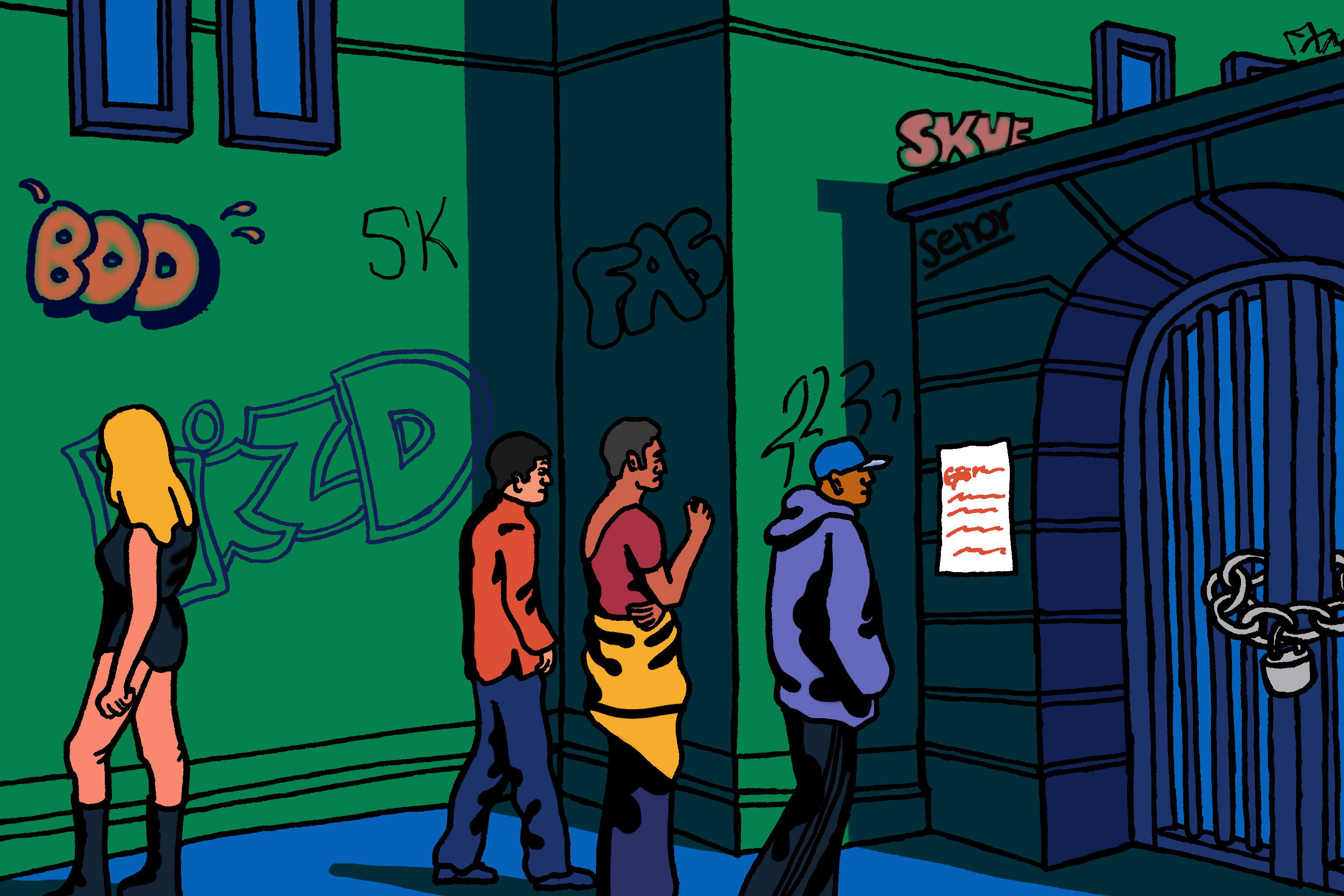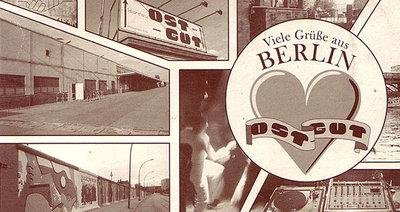Nightclubbing: Berlin’s Ostgut
A look back at the venue that set the stage for Berghain, the world’s most revered techno club: Ostgut.
Berghain in Berlin is regarded as one of the best techno clubs on the planet. We all know the story by now: Parties there run for days. The DJs have developed a new definition of techno. And it’s a place shaped equally by its gay and straight audience. What many people don’t know is that Berghain had a predecessor: Ostgut, which opened in 1999 and closed in 2003 when it was torn down to make room for the O2 Arena. The Ostgut was a link between Berlin’s club scene of the ’90s, raging in the abandoned buildings of the capital of the former East Germany, and the cosmopolitan scene which is now fueled by thousands of EasyJetters every weekend.
To go to the Ostgut, you had to drive on Stralauer Allee, one of Berlin’s eastbound arterial roads. In the late ’90s this was not a regular thing to do. After the fall of the Wall, artists and activists had seized the central districts. Most notable clubs were still in Mitte, East Berlin’s center. Passing over concrete tiles through an area of abandoned structures, you reached a faceless grey building: the Ostgut.
Getting in was not a big deal as it is today. It rarely took longer than a couple of minutes.
Getting in was not a big deal as it is today. It rarely took longer than a couple of minutes. Just a moment later, and you found yourself standing in front of one of the huge panels that framed the dance floor. The wardrobe with oversize industrial story racks serving as giant sofas was on the left, the toilet with a small bar was on the right. The main bar was located behind the dance floor – as well as the darkrooms, more or less to the irritation of the party people from Mitte. In Mitte’s techno clubs, gay lifestyle played only a marginal role. And vice versa: Most gay clubs didn’t care much about modern club music.
Nothing concealed that this place was built to repair trains. Yet the layout and the facilities were thoughtfully designed. It was all about the dance floor. There was no smoker’s lounge, no ice cream bar, no Biergarten, no restaurant, no garden, no works of art on the walls (and no concerts and no record label). You were not exposed to the music all the time. You could get lost in a conversation on the couch in front of the toilets – or even take a nap on the sofas.
André Galluzzi was Ostgut’s star. With his shiny black hair and a focused gaze, he reigned over the crowd playing hard, dark, demanding, monotonous techno. The bears in army trousers and leather boots, many of them topless, filled about two-thirds of the dance floor, partying with the utmost seriousness. I was never made to feel an intruder. Nor was I explicitly welcomed.
In Mitte at that time, clubbing was not particularly great. The techno revolution had happened almost ten years previously and lost some of its shattering effect, particularly after E-Werk closed in 1997. After almost a decade of hanging out and partying in a continuous flow of new illegal and semi-legal places, it was more like something people did. The club you chose said more about you as a person than your passion for music and the desire to party. As a Cookies regular you probably had an agency job and were eager to show off your new outfit. If you were a Tresor-goer, it meant you were a diehard raver probably living in a high-rise in the outskirts of the city. At WMF you might have been a painter or a graphic designer – or even an early web designer.
Ostgut was not an extension of one’s private life. Instead of bumping into your boss, you might dance next to a 60-year-old man in a mesh shirt. Wondering what his idea of partying was, you might answer this question for yourself for the first time. Ostgut was not about a scene, a peer group, a career. It was about emancipation. The 60-year-old could have spent time with his grandkids. Yet he decided to be here in Ostgut. Realizing this leads to the question: What is my idea of joy?
At first, nobody knew who owned Ostgut. Michael Teufele and Norbert Thormann ran the lab.oratory, a gay sex club. The idea to open a dance club came up when they were offered to rent more space. Ostgut did not pick up the business practices of profit-oriented party promoters. It was about autonomy. Guestlists were manageable. They rarely worked with sponsors. Teufele and Thormann never gave an interview.
Apart from E-Werk, Ostgut was the first place with resident DJs who defined the sound of the club. At most places the resident was a sideshow to the international guest. But Ostgut did not book the Berlin DJ stars of the ’90s (Rok, Tanith, Woody, Disco). They trusted their own instincts: André Galluzzi had just recently moved from Frankfurt to Berlin. Marcel Dettmann turned in a demo cassette and got a call: “We listened to your tape while cleaning the place. And we enjoyed it.”
The Panoramabar opened two years later. It was accessible through a huge staircase after having passing the wardrobe. The bears remained downstairs. The dance floor was two-thirds the size of the Panoramabar at Berghain. Again, there was only the dance floor, a bar and a regular toilet. There was little space where you were not exposed to the crowd.
At Ostgut, one never felt too young or too old, too dressed up or too casual, too wealthy or too poor.
The Panoramabar was more digestible for partygoers who did not relate to gay partying. There were more or less as many women as men, and the range of music was wider. At Ostgut, quality techno always worked. At Panoramabar, every kind of four-to-the-floor-dance music was an option. Bass-heavy disco house by Brett Johnson worked better than contemporary minimalism. The crowd had a weak spot for ’80s house classics. Lil’ Louis’ “French Kiss” always worked. At sunrise, the dancer’s gaze wandered over the strange ensemble of buildings soon to be demolished.
When Ostgut closed in 2003, nobody expected them to find an adequate new location. But the basics of Ostgut, with its high ceiling and the intimate Panoramabar with its view from above, were successfully reconstructed at Berghain. This kind of reconstruction had never been done before in this city. It remains Teufele’s and Thormann’s ultimate secret how they persuaded (or seduced) the gay crowd to dance to modern club music. At Ostgut, one never felt too young or too old, too dressed up or too casual, too wealthy or too poor. After Ostgut’s closing someone wrote in their online forums: “I was offered more drinks and cigarettes than I asked for.”
Header image © Ostgut

